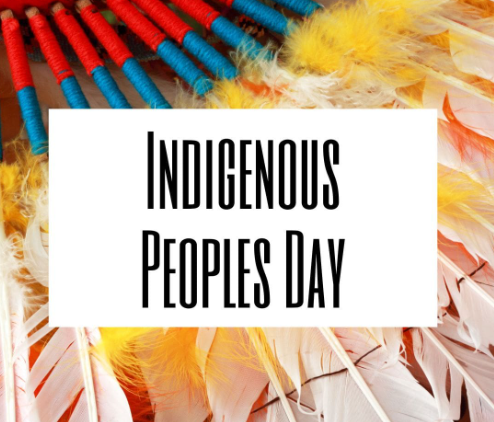The Cultural and Political Contributions of Native American Communities: A Rich Tapestry of History and Legacy

Native American communities have long been integral to the cultural, environmental, and political landscapes of North America. Their contributions are woven into the very fabric of the continent, yet much of their impact remains underexplored in mainstream narratives. Moving beyond the well-known figures like Sitting Bull or Geronimo, this article aims to illuminate the broader, often lesser-known contributions Native Americans have made in the realms of art, environmental stewardship, and civil rights.
The Artistic Legacy of Native American Communities
Art has always been central to Native American cultures, serving not only as a means of expression but also as a form of storytelling, preserving history, and passing down knowledge. Beyond the famous totem poles and pottery, the artistic achievements of Native Americans are incredibly diverse and region-specific. One lesser-known figure who made groundbreaking contributions to Native American art is Oscar Howe, a Yanktonai Dakota artist. Howe revolutionized Native American art in the 20th century by blending traditional techniques with modernist styles. His refusal to conform to stereotypical depictions of Native Americans in art challenged the art world’s narrow definitions of “authentic” Native art and paved the way for future generations of Native artists.
In addition to visual arts, Native American contributions to contemporary music are significant. Buffy Sainte-Marie, a Cree musician and activist, was among the first Indigenous artists to gain mainstream recognition in the 1960s. Her music, often focused on social justice issues, was groundbreaking for its bold political stance, especially her protest songs advocating for Indigenous rights and global peace.
Environmental Stewardship: Guardians of the Earth
Perhaps one of the most profound contributions of Native American communities lies in their environmental stewardship. Long before modern sustainability movements, Native Americans practiced ecological principles that ensured balance and harmony with nature. The philosophy of Tēnāháwiháw, often translated as “caretakers of the land,” encapsulates the deep relationship between Indigenous peoples and the environment.
One example of lesser-known environmental leadership comes from the Haudenosaunee Confederacy (also known as the Iroquois Confederacy), whose governance system and agricultural practices deeply influenced modern environmental thought. Their concept of the “Seventh Generation” principle, which encourages making decisions with the well-being of those seven generations into the future in mind, is a precursor to today’s sustainable development models.
Moreover, the contributions of Indigenous women like Winona LaDuke, an Ojibwe environmentalist, demonstrate the ongoing leadership of Native Americans in environmental activism. LaDuke’s work through the White Earth Land Recovery Project and Honor the Earth focuses on reclaiming Native lands and protecting the environment, particularly fighting against climate change and advocating for renewable energy.
Political Activism and Civil Rights: A Fight for Justice
While names like Sitting Bull and Geronimo often dominate discussions of Native American resistance, Native American activism has evolved far beyond historical figures. The fight for rights—both Indigenous and broader civil rights for marginalized groups—has seen countless Native Americans at the forefront of political movements.
Vine Deloria Jr., a Standing Rock Sioux, stands as one of the most influential Native American intellectuals of the 20th century. His seminal book Custer Died for Your Sins: An Indian Manifesto (1969) helped ignite the Red Power movement, drawing attention to the systemic injustices faced by Native Americans. Deloria’s work was crucial in advocating for self-determination, tribal sovereignty, and the reassertion of Indigenous identity in a world that had long sought to erase it.
Another powerful but less widely known figure is Ada Deer, a member of the Menominee Tribe, who led the fight to restore her tribe’s federal recognition in the 1970s after it had been terminated under the U.S. government’s assimilation policies. Her work culminated in the Menominee Restoration Act of 1973, a monumental victory that reestablished the tribe’s legal standing and land rights. Deer went on to become the first Native American woman to head the Bureau of Indian Affairs, where she continued her advocacy for Indigenous rights.
In Canada, the contributions of the Idle No More movement have had a profound impact on Indigenous and environmental activism. Founded by four women in 2012, the movement grew into one of the largest grassroots campaigns for Indigenous sovereignty in modern times. It called for the protection of land and water, recognition of treaty rights, and a halt to government policies that threatened both the environment and the autonomy of Indigenous peoples.
A Continuing Legacy of Resilience
The story of Native American contributions to North America is not confined to the past. It is an ongoing narrative of resilience, creativity, and leadership. Deb Haaland, a member of the Laguna Pueblo and one of the first two Native American women elected to Congress, made history again in 2021 by becoming the first Native American to serve as U.S. Secretary of the Interior. Her appointment is a watershed moment for Indigenous representation in government and marks a new chapter in the long struggle for Native American rights and recognition.
Native American communities continue to face systemic challenges, including the fight for land rights, cultural preservation, and against the harmful legacies of colonization. However, the contributions of Indigenous peoples—across the arts, environmentalism, and political activism—are undeniable and continue to enrich the cultural and political fabric of North America.
From lesser-known artists and environmental activists to political trailblazers, Native Americans have shaped the course of North American history in profound ways. Their deep connection to the land has offered lessons in sustainability, their artistic talents have expanded cultural horizons, and their persistent activism has laid the groundwork for ongoing struggles for justice and equality. As we honor their contributions, we recognize that the legacy of Native Americans is not only a testament to their endurance but also a vital part of the future we build together.





